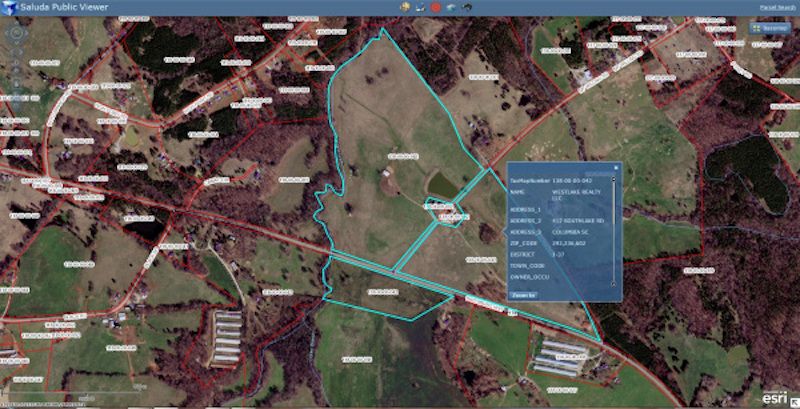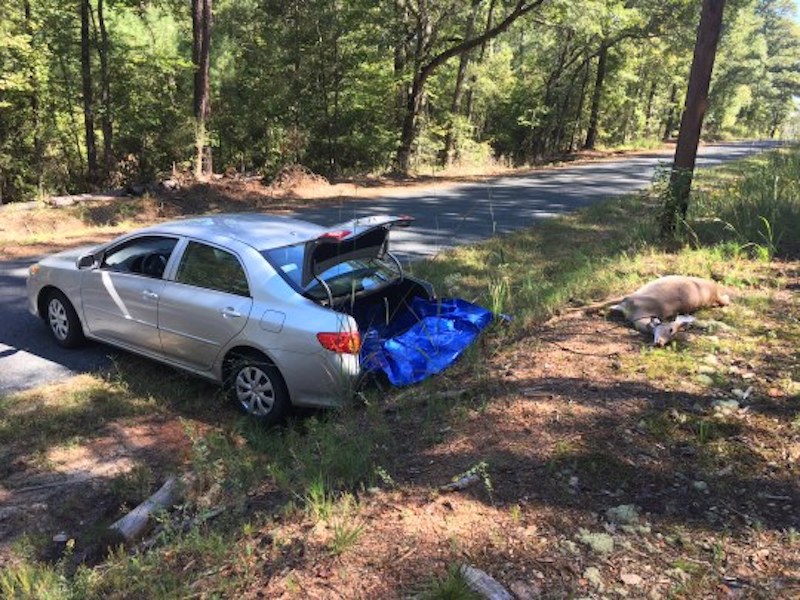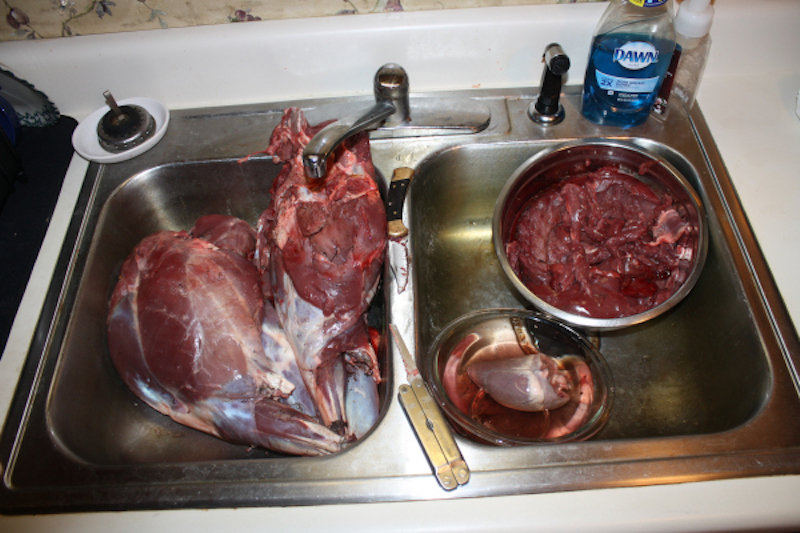Hunting with friends and family is fun, but hunting alone tests your skills and knowledge, and challenges you mentally and physically. I found that out the hard way.
I started bowhunting in 2014; I was 22 years old. Fortunately, I had hunting mentors that helped me obtain proper gear, find hunting land, and shoot my first deer. I felt like a real bowhunter. That was until I moved 1,000 miles across the country and had to start my second season without guidance or a place to hunt. I learned a lot about myself, deer, and what it takes to be a successful, self-sufficient bowhunter.
I wouldn’t wish the abrupt transition upon anyone. But I would recommend everyone hunt solo for a season. You might not realize how much you rely on others until you have to rely on yourself. If you don’t have a mentor and are forced to hunt alone, embrace it. If you have a mentor, thank and appreciate them, but opt to break away and hunt alone to learn and grow. It won’t be easy, but it will be educational.
Whether you choose to hunt alone, or hunt alone by default, every difficult moment becomes a rewarding memory. Here are a few of mine.

Ask permission to hunt private land or use GIS data to find public land. Photo Credit: ATA
When I moved from Wisconsin to South Carolina, I left my family and friends, and parted ways with my family’s hunting property. Driven by the desire to get lean, protein-packed venison, I started researching public land options. I found a few wildlife management areas, but they were more than 30 minutes away. The alternative was to ask for permission to hunt private property. I value sleep, so I opted for the latter.
I remember googling how to ask for permission. I found several articles regarding how to ask a landowner for permission to hunt, but little information about how to find hunting land for which I could ask permission. Luckily, my coworker at the time had a Geographic Information System certification, which meant he was trained to view, analyze and create maps and data. He explained how to use the internet to find tracts of land to hunt.
In short, many counties have free public GIS data and records available online. Hunters would be most interested in parcel data and aerial maps. Parcel data shows property lines and information about the property, including acreage, date of purchase, and the landowner’s name, phone number and address. Aerial photos are images of the land taken from above. They can be used to identify cover, funnel, habitats, bedding areas and potential stand sites.
Not all local governments have GIS data available. Some don’t have funding to conduct GIS mapping projects, while others aren’t allowed to share the information due to state regulations. I googled “Saluda County GIS” and got a hit. I started digging around the website and located eight nearby properties owned by individual people, rather than companies or the state. I went door to door and asked for permission. I received seven “no’s” before receiving a “yes” on my last stop.
We talked for an hour to hash out specific details. The landowner let me hunt 20 acres of his land under one condition: I could only use my bow. He felt uncomfortable allowing me to hunt with a gun, because fishermen and duck hunters frequented a pond that neighbored the property. As a thank you, I helped him around his house, picked up trash from the ditches around his property, and stopped by regularly to chat over a baked good I brought. I hunted his property for two years before moving out of the area. We kept in touch for another three years before he passed away.
Several peopled doubted my ability to find private land to hunt, but I was determined and persistent. I not only found land to hunt, I also befriended a generous, kind-hearted older gentleman. He was as grateful for my company as I was his willingness to work something out. I harvested two deer off his land and had several other opportunities. I’m convinced if you look long enough, you’ll eventually connect with the right person.

If you’re alone and unable to physically lift the deer, don’t be afraid to get creative. Photo Credit: Cassie Gasaway/ATA
While hunting the South Carolina property one morning in November, I arrowed an adult doe. It was my third bow kill, and I was ecstatic. I was hunting alone and called the landowner, who previously offered to help me extract anything I shot. I called multiple times, but he didn’t answer. As the morning temperature rose, I knew I had to get her out of the woods on my own.
I tied my harness rope around her neck and went to pull, but nothing happened. The deer weighed as much as I did. I tried again using all my weight and strength and made it 15 yards before needing a break. After I caught my breath, I backtracked to get my bow and other hunting gear. I took turns dragging the deer and circling back for my equipment. I struggled every yard of the 250-yard stretch to my vehicle. My muscles ached, my lungs were tired, and I was physically exhausted after pulling the carcass through the woods, over downed trees, and along uneven terrain.
When I reached my vehicle, which was parked on a very secluded backroad, I sat down nearly defeated. I eyed my 2010 Toyota Corolla and wished the carcass was already in the trunk. I called the landowner again in hopes he’d answer my call for help. He didn’t. I knew what had to be done. I laid a tarp in the trunk of my vehicle and started to lift the deer. I heaved the front legs upward, the deer barely moving. I stood dumbfounded by how heavy the carcass was. I had to get her in the vehicle, so I tried again. I bear-hugged the carcass this time but could still only get one-quarter of her body into the trunk. I was too short to lift more of her body up and over the trunk edge, and I couldn’t readjust mid-air to get a better grip.
I set her back down and put my thinking cap on. “I need to get taller,” I thought. I hopped in my trunk and figured I could lift with my legs, which were stronger than my arms. I squatted down and started to stand back up with her front legs in my hands. But I still couldn’t get enough of her in the trunk to safely readjust. I laughed at the thought of someone else watching me struggle. Of course, no one was around.
I sat down frustrated. I thought, “I can’t do it. I can’t get her in my trunk. I’m not strong enough or tall enough to make this work.” I started to tear up a bit. I looked around wishing I had a piece of plywood to use to drag her body into my trunk. I looked for a fallen tree that could work the same way, but all I saw was the road, ditch and upright trees. Then, I had an idea. “The ditch!” My hands were sore from dragging the deer, and my throat hurt from breathing heavily, but I moved the deer one last time to the top of the ditch. I backed into the ditch until my bumper hit land. I climbed up the ditch and pushed the carcass off the edge into my trunk. And just like that, I was done!
The entire process took me more than two hours. I immediately took the deer to a processor to ensure the meat wouldn’t sit outside in the heat any longer. The processor was baffled when I (a 24-year-old female) opened my trunk to deliver an adult doe I harvested with a bow that morning. He weighed the doe at 112 pounds, which was only 10 pounds less than what I weighed. Even though I was physically spent, I was also incredibly proud of myself. I drove away thinking, “I did it.”

If you’ve never field dressed a deer by yourself, call someone and have them talk you through it or research the steps. Photo Credit: Cassie Gasaway/ATA
I’ve shot many deer, but I never tackled the responsibility of field dressing a deer until I was 24. Before then, I watched my father do it, or I took it to the processor. I shot a fawn for meat and couldn’t bring myself to go to the processor after being bogged down with student loan debt. I vowed to do it myself, but I didn’t know where to start.
I called my dad and asked for instructions. I didn’t have much equipment, but guess what? I had latex gloves and a sharp knife, which meant I had everything I needed. Through our 20-minute conversation, my father walked me through the job step by step. I didn’t have a gambrel or a pulley system to hang the deer, so I skinned and quartered the deer on the ground. I worked slowly and carefully to make cuts, remove the entrails, and obtain the meat. It was messy and time-consuming. It wasn’t easy, but it wasn’t difficult either.
I brought chunks of meat inside and proceeded to cut, debone, bag and freeze the meat. Harvesting and butchering an entire deer by myself was empowering. I didn’t want all my hard work to go to waste, so I did what I had to do. And I have done it many times since. Now, it’s second nature.
I realize not everyone has a hunting mentor. If that’s the case and you don’t have someone to call, read the Bowhunters United article, “Pep Talk: Yes, YOU can Field Dress a Deer!” Another helpful article from Bowhunters United is “How to Field Dress a Deer in 10 Steps.” Remember to download or save these resources should you need them somewhere you don’t have service.
The more you hunt, the more obstacles you’ll face and the more memories you’ll make. Always strive to find a way to overcome. For example, if walking to your stand alone is intimidating, call and talk to someone on the phone for support. If you can’t or don’t want to hang a treestand, use a ground blind. If you struggle to correctly gauge your shot distance, buy a rangefinder.
Whatever you need to do, adapt to find a way to do it. When you do, you’ll simultaneously find confidence and a sense of accomplishment.
If you want something bad enough, you’ll find a way, not an excuse. It’s OK to approach a new situation or experience with questions, hesitation and uncertainty. It’s also OK to take a moment to cry, think, or just be frustrated. But don’t pity yourself too long. Instead, get up, tap into your creative side, and persevere. Trust me, and believe in yourself. You can do it.